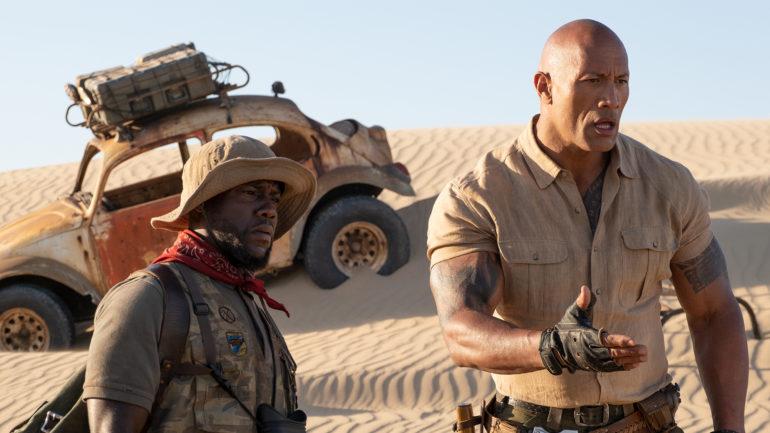‘Jumanji: The Next Level’: Foley Artist Gary Hecker Discusses Bringing Sounds of the Game to Life
By Jazz Tangcay
LOS ANGELES (Variety.com) – This past weekend, audiences flocked to movie theaters to see Dwayne Johnson, Jack Black, Kevin Hart, Karen Gillan and Nick Jonas step back into a magical game to rescue one of their own in “Jumanji: The Next Level.”
The rules are the same, and they have to get out or remain trapped forever. As the adventure levels up, so does the CGI and the Foley.
Gary Hecker has over 379 credits to his name as Foley sound effects artist. Just this year alone, Hecker has worked on “Once Upon a Time in Hollywood,” “Spider-Man: Far From Home,” “Men in Black: International” and “.” With a film like the latter, Hecker explains, “It takes 18 days of nine hours to produce those intense recordings and performances.”
Foley, as Hecker says, requires him to “add custom live in-sync sound effects to the film.” As the film projects on-screen inside the Foley studio, Hecker has to create sounds, following the actors. “We have to provide sound for everything that is moving on the screen,” Hecker says.
With all the new locations, it meant Heckler had more action to create. “Those [scenes] really provided so many opportunities for us,” he says. Below, he breaks down two key scenes from the film.
The Ostrich Attack
“This scene has all the main characters in the desert. While they’re on the journey, they’re attacked by one ostrich and then, there’s a stampede of them. [Creating] the sound was really an extensive process. The ostriches were CGI characters and all the sounds had to be uniquely handcrafted. Our director, Jake Kasdan, and sound supervisor Julian Slater came to me early on about this. They wanted the creatures to sound super heavy.
“As it’s in the desert, we needed to get more definition on the sand since sand doesn’t generate a lot of sounds. So, we mixed it with kitty litter to get that definition. Also, it’s such a loud and thunderous moment; I used mini-boxing gloves to generate their feet sound. We recorded with super dynamic microphones and sub-harmonic harmonizers to get that heavy sound. That part was definitely a chore, but it came out great.
“I recorded all the featured ostriches, and we set up multiple channels for the group of ostriches that stampede around.
“The next task was coming up with the ostrich feathers. The sound library didn’t have the big wing flaps that you see on screen, so they too had to be customized for the movie. I went out and found these giant feather dusters, matching the rhythm of the wing flaps.
“Once I had the feet and feathers, I had to create the sound of the beaks. There’s the scene where the ostriches are attacking the dune buggies. For that moment, I had different types of cardboard to get a cacophony of the different tones as the beaks pecked away on the roof. When they rip through the top of the buggies, that sound there was created by crowbars.
“When you combine all those sounds together, it just creates this really impactful sound.”
The Bridge Scene
“As the gang comes up to the cliff, you have this amazing panoramic view. And hanging from the sky are all these small bridges that they need to cross in order to get across. Meanwhile, they’re being chased by these Mandrills.
“For that scene, I had to create from scratch all the layers of creaks for the bridge. I had to start with all the footsteps for the characters as they each jump. Whether they’re running or falling or having feet land, I had to create every single jump. So, I jumped from cement and used various wood planks, chairs and wood props. I also had to add the creaking. There was one scene where had the steps wrong on the plank with it breaking, so I had to snap the board in time with the picture.
“I broke shingles and snapped them and cracked them when the boards on the bridge broke. When the characters are falling or grabbing onto the vine, I’d mix up plants and leather pouches to create the twisting and stretching of vine-type sounds.
“That whole scene just went on for the longest time. After doing the characters, I had to create the sound of the Mandrills. Their sound was jumping and clawing. For their paws, I would use leather padded gloves and had paws attached to them.
“Everything you see at that moment needed to be recreated on stage as production doesn’t have the sound at that point.”

